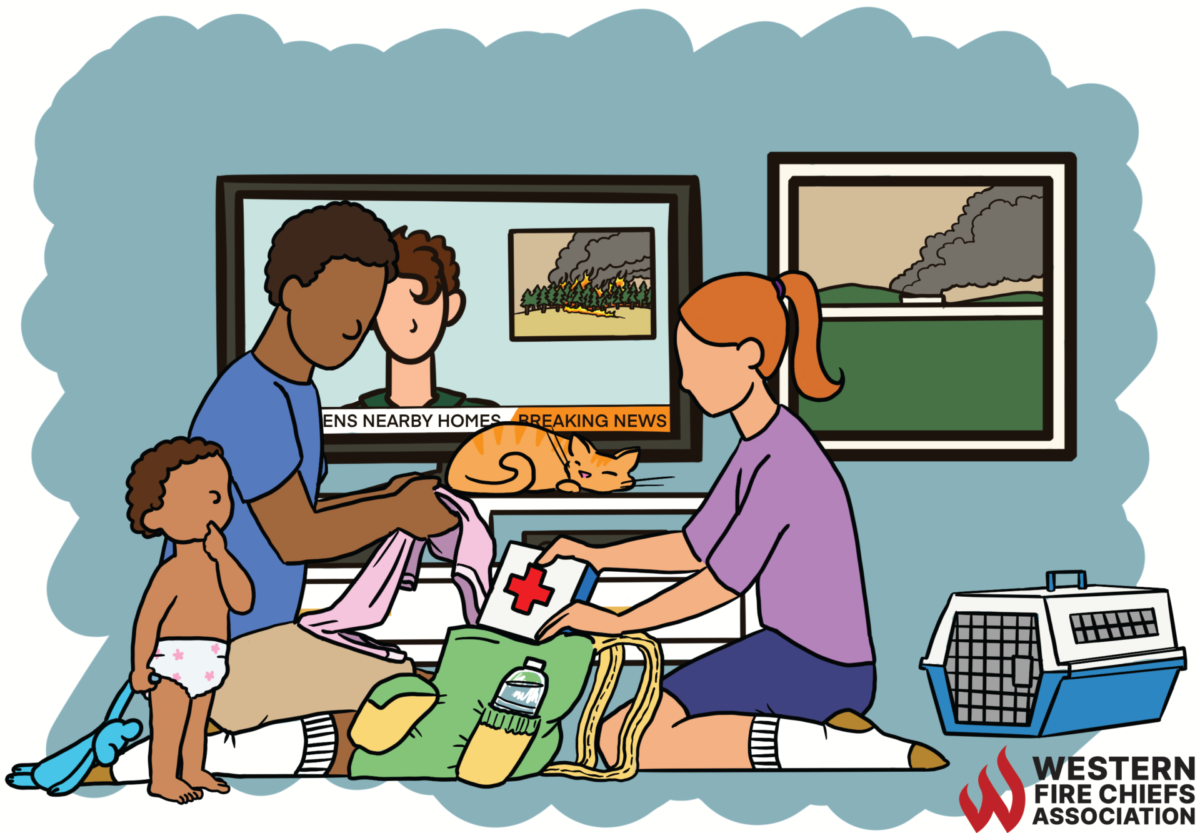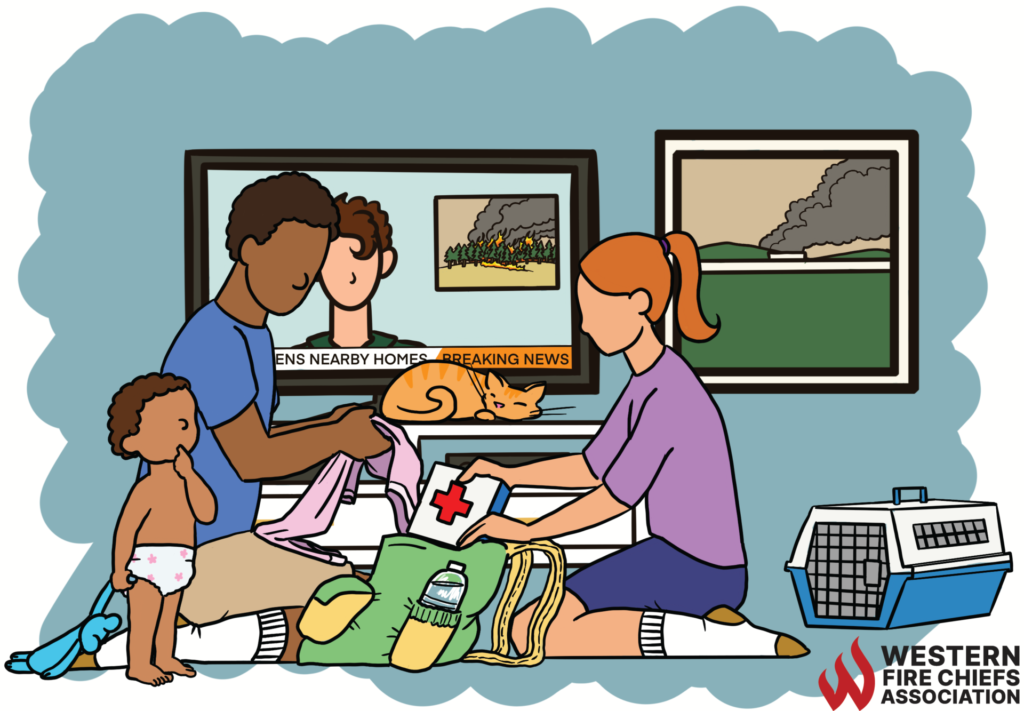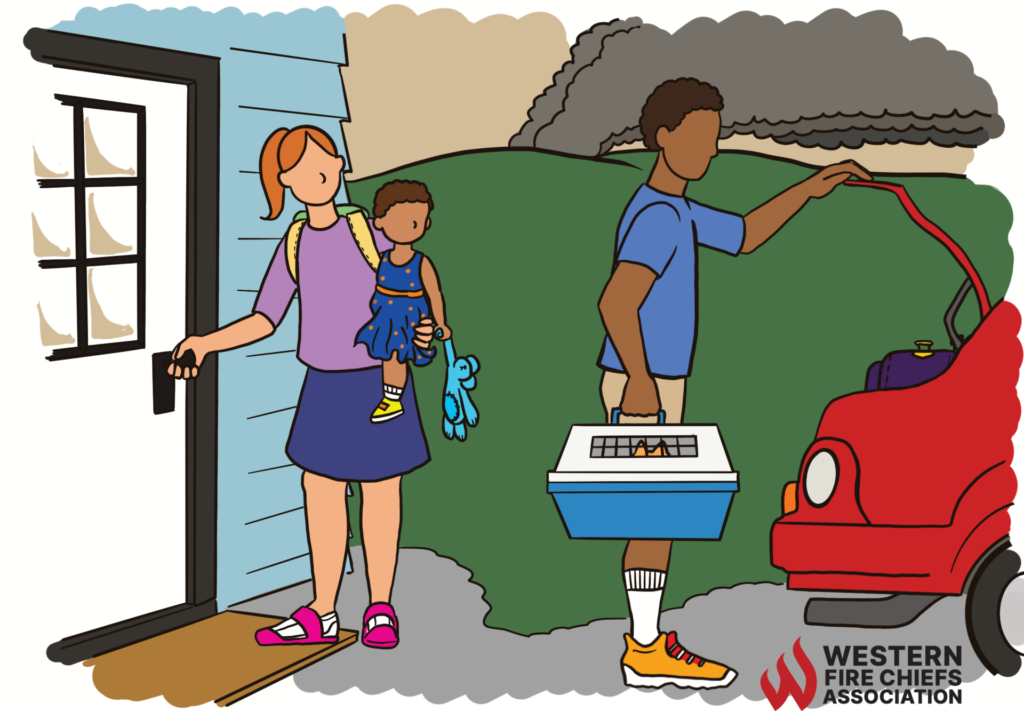Fire Pit Safety Tips
Stay safe around the campfire with tips from the Western Fire Chiefs Association. Learn essential precautions and practices for a worry-free outdoor campfire.
Understand the different wildfire evacuation levels and how to prepare for them with guidance from the Western Fire Chiefs Association (WFCA).
Published:August 9, 2022
Edited:March 4, 2024

Understand the different wildfire evacuation levels and how to prepare for them with guidance from the Western Fire Chiefs Association (WFCA).
Please note that these are regional evacuation guidelines. For information specific to your immediate area, check with your local emergency management agency.
During wildfire season, it is critical to understand the different evacuation levels in case you need to leave your home at short notice. Knowing how to prepare and what to do when each level is announced will help you to make the correct decisions and keep your family safe.
There are three levels of evacuation, based on the degree of imminent danger in the area. Stay prepared for all levels by becoming familiar with the following guidelines and using the resources available to you in your local community.
Be aware of active emergencies such as wildfires in your area, and potential evacuations. Follow local news updates on the internet, TV, and radio, and monitor any information from emergency service authorities.
A level one threat means it is time to prepare. Review your emergency plan and evacuation routes. Have a plan in place to evacuate pets and livestock, if necessary. Ensure your go-kit is packed up and ready.
If you have children, are elderly, or have disabilities or limited access to transport, you should consider leaving during a level one threat to give yourself enough time to evacuate safely.

A level two threat indicates that there is substantial danger nearby. You and your family should be ready to leave at any moment. Keep monitoring for news updates and emergency services announcements.
Under level two threat conditions, the emergency is less predictable. If conditions deteriorate rapidly, emergency service personnel cannot always guarantee they will be able to notify you in time. Therefore, if you feel unsafe at all, you are encouraged to leave without waiting for further notice.
You may have time to gather the necessary items but doing so is at your own risk. This is why it is critical to have your go-kit ready as soon as you receive a level one notice.
Make sure to inform loved ones of your evacuation plans so they know that you are as safe as possible.

A level three alert means there is immediate, extreme danger in your area, making your home unsafe to stay in. You must evacuate immediately. It is critical to leave your home as quickly as you can. The time to get organized has passed at this point; do not attempt to protect your home or gather belongings before leaving.
When leaving, drive carefully and ensure that your headlights are switched on for visibility. Do not return to your home until public safety officials have declared that the area is safe to re-enter.
There are plenty of resources available to help you prepare for a wildfire or other emergency evacuation.
The US Government site Ready.gov has information about how to prepare for wildfires, how to stay safe during a wildfire, and guidance on returning home afterward.
Download the FEMA app and receive real-time alerts from the National Weather Service for up to five locations nationwide.
Sign up for community alerts in your area. Be aware of the Emergency Alert System (EAS) and Wireless Emergency Alert (WEA), which requires no-sign up.
You can also download the free Red Cross Emergency app for a list of open Red Cross shelters in your area.
Long before a wildfire is at your door, consult WFCA’s Home Hardening Tips and Best Practices to make sure your property is prepared to resist fire.
Stay safe around the campfire with tips from the Western Fire Chiefs Association. Learn essential precautions and practices for a worry-free outdoor campfire.
Discover essential firework safety tips to ensure a dazzling display without accidents. Learn how to celebrate responsibly with expert guidance from WFCA.
Explore the role of AI in wildfire prediction with guidance from the WFCA. Learn how advanced algorithms and data analytics enhance early detection and response.